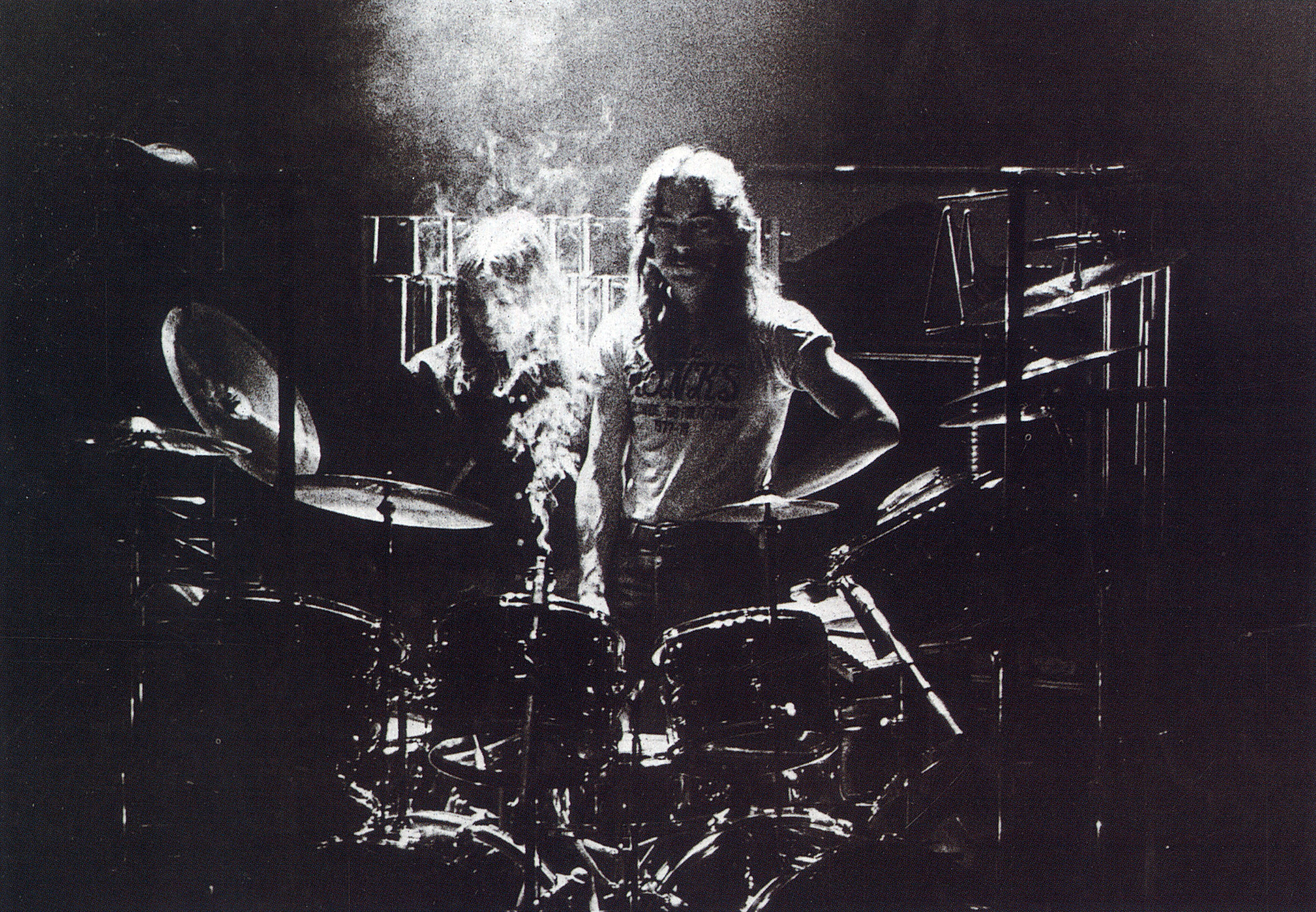An Indulgent, Brainy Masterwork

 Cerebral. If there is one word to describe Rush’s sixth studio album, that is this descriptor. “Hemispheres” is an album really unlike anything that not only Rush had produced but this style of rock music as a whole at the time. Personally, this is my favorite Rush album, as it takes the ideas that worked on previous albums and expands them to heights that on a technical level never before reached nor reached since. This is a record that gets into your psyche, one that transports the listener into this different plane of existence. The power trio is at the peak of their musical capabilities on this release, pushing their talents and even their bodies and minds to their absolute limits, a feeling that is wonderfully portrayed on the record as a whole.
Cerebral. If there is one word to describe Rush’s sixth studio album, that is this descriptor. “Hemispheres” is an album really unlike anything that not only Rush had produced but this style of rock music as a whole at the time. Personally, this is my favorite Rush album, as it takes the ideas that worked on previous albums and expands them to heights that on a technical level never before reached nor reached since. This is a record that gets into your psyche, one that transports the listener into this different plane of existence. The power trio is at the peak of their musical capabilities on this release, pushing their talents and even their bodies and minds to their absolute limits, a feeling that is wonderfully portrayed on the record as a whole.
“Hemispheres” sees the band returning to the format of “2112” where the title track is a side long, multi part epic, and the second side has shorter, punchier tracks, at least for the most part. While this appears to be the band retreading ground, the opening synthesizers and bass line of the title suite immediately dispels that notion. The second book of the Cygnus X-1 Saga, beginning just after the main character entered the blackhole, presents a tale of Greek gods, specifically Apollo and Dionysus, in a conflict with each other. It’s a cerebral tale of a battle between the two hemispheres of the brain, one of logic and one of love in constant conflict with one another. The problem that the band seeks to answer is that both sides of the brain should work in harmony, the side of logic and reasoning and the other of love and passion should come to together in equal harmony. Lyrically rich, musically complex, with frequent, brilliant implementation of synthesizers, melodic intricate drumming, and Peart's impeccable writing giving grandeur to the track. It will take a few listens to truly comprehend the track but once it finally clicks, you will be in awe of its splendor.

Luckily, once the second side begins, Rush construct the next tracks in a fashion that the album doesn’t feel top heavy like “2112” and it feels like a cohesive whole. Opening with the punchy “Circumstances”, it discusses the idea of disillusionment, of how the reality of one’s situations start to come upon oneself, but that ultimately one must persevere, that “the more things change, the more they stay the same.” Add in some great use of synthesizers and lyrics that are sung in French, this is an unorthodox, but relatable song to anyone who feels as if life is starting to weigh down upon them. The next standout is “The Trees” and while a goofy title, is an allegory for workers rights. The Oaks represent the higher ups, possible corporations who reject what the Maples, or the workers desire. There is this unrest, this inequality and by the end of the track this inequality is rendered arbitrary when the trees are made equal “by hatchet, Axe, and saw…” A darkly humorous track, there is an abundance of experimentation, yet the band always remembers to be catchy and impactful, and the result is one of Rush’s best, if bizarre, tracks.
 The record concludes with the nine and a half minute instrumental “La Villa Strangiato”, subtitled as (An Exercise in Self-Indulgence). Inspired by dreams that Alex Lifeson had, this is truly an exercise in self-indulgence, but at no point does the track come off as the band being pretentious or thinking they are better than the listener. This is the band just having fun, throwing ideas at the wall and seeing what sticks and brilliantly, a lot of those ideas do stick. In terms of pure instrumentation and performance, this track is Rush’s magnum opus. The opening acoustic guitar, with Lifeson shredding his heart out on it foreshadows the grandeur that is to come. Hints of synthesizer and bells pepper the beginning until Peart’s drumming starts to slowly grow and grow, culminating in a bombastic riff by Lifeson. Lee’s bass lines are quick, snappy and have a deep groove to them that gives the track a lot of weight and power, and Peart’s drumming is so complicated that even other well respected drummers have described his performance as almost a rite of passage, to test how well of a drummer one really is. A highlight of the instrumental is the fourth section entitled “A Lerxst in Wonderland”, where Lifeson lays out what in many ways could be considered his best guitar solo of his career, a solo that is truly spellbinding. All congealed together, Rush produced a track, and an album that truly tested them as performers, but it would almost cost them their careers and sanity.
The record concludes with the nine and a half minute instrumental “La Villa Strangiato”, subtitled as (An Exercise in Self-Indulgence). Inspired by dreams that Alex Lifeson had, this is truly an exercise in self-indulgence, but at no point does the track come off as the band being pretentious or thinking they are better than the listener. This is the band just having fun, throwing ideas at the wall and seeing what sticks and brilliantly, a lot of those ideas do stick. In terms of pure instrumentation and performance, this track is Rush’s magnum opus. The opening acoustic guitar, with Lifeson shredding his heart out on it foreshadows the grandeur that is to come. Hints of synthesizer and bells pepper the beginning until Peart’s drumming starts to slowly grow and grow, culminating in a bombastic riff by Lifeson. Lee’s bass lines are quick, snappy and have a deep groove to them that gives the track a lot of weight and power, and Peart’s drumming is so complicated that even other well respected drummers have described his performance as almost a rite of passage, to test how well of a drummer one really is. A highlight of the instrumental is the fourth section entitled “A Lerxst in Wonderland”, where Lifeson lays out what in many ways could be considered his best guitar solo of his career, a solo that is truly spellbinding. All congealed together, Rush produced a track, and an album that truly tested them as performers, but it would almost cost them their careers and sanity.


Luckily, once the second side begins, Rush construct the next tracks in a fashion that the album doesn’t feel top heavy like “2112” and it feels like a cohesive whole. Opening with the punchy “Circumstances”, it discusses the idea of disillusionment, of how the reality of one’s situations start to come upon oneself, but that ultimately one must persevere, that “the more things change, the more they stay the same.” Add in some great use of synthesizers and lyrics that are sung in French, this is an unorthodox, but relatable song to anyone who feels as if life is starting to weigh down upon them. The next standout is “The Trees” and while a goofy title, is an allegory for workers rights. The Oaks represent the higher ups, possible corporations who reject what the Maples, or the workers desire. There is this unrest, this inequality and by the end of the track this inequality is rendered arbitrary when the trees are made equal “by hatchet, Axe, and saw…” A darkly humorous track, there is an abundance of experimentation, yet the band always remembers to be catchy and impactful, and the result is one of Rush’s best, if bizarre, tracks.
 The record concludes with the nine and a half minute instrumental “La Villa Strangiato”, subtitled as (An Exercise in Self-Indulgence). Inspired by dreams that Alex Lifeson had, this is truly an exercise in self-indulgence, but at no point does the track come off as the band being pretentious or thinking they are better than the listener. This is the band just having fun, throwing ideas at the wall and seeing what sticks and brilliantly, a lot of those ideas do stick. In terms of pure instrumentation and performance, this track is Rush’s magnum opus. The opening acoustic guitar, with Lifeson shredding his heart out on it foreshadows the grandeur that is to come. Hints of synthesizer and bells pepper the beginning until Peart’s drumming starts to slowly grow and grow, culminating in a bombastic riff by Lifeson. Lee’s bass lines are quick, snappy and have a deep groove to them that gives the track a lot of weight and power, and Peart’s drumming is so complicated that even other well respected drummers have described his performance as almost a rite of passage, to test how well of a drummer one really is. A highlight of the instrumental is the fourth section entitled “A Lerxst in Wonderland”, where Lifeson lays out what in many ways could be considered his best guitar solo of his career, a solo that is truly spellbinding. All congealed together, Rush produced a track, and an album that truly tested them as performers, but it would almost cost them their careers and sanity.
The record concludes with the nine and a half minute instrumental “La Villa Strangiato”, subtitled as (An Exercise in Self-Indulgence). Inspired by dreams that Alex Lifeson had, this is truly an exercise in self-indulgence, but at no point does the track come off as the band being pretentious or thinking they are better than the listener. This is the band just having fun, throwing ideas at the wall and seeing what sticks and brilliantly, a lot of those ideas do stick. In terms of pure instrumentation and performance, this track is Rush’s magnum opus. The opening acoustic guitar, with Lifeson shredding his heart out on it foreshadows the grandeur that is to come. Hints of synthesizer and bells pepper the beginning until Peart’s drumming starts to slowly grow and grow, culminating in a bombastic riff by Lifeson. Lee’s bass lines are quick, snappy and have a deep groove to them that gives the track a lot of weight and power, and Peart’s drumming is so complicated that even other well respected drummers have described his performance as almost a rite of passage, to test how well of a drummer one really is. A highlight of the instrumental is the fourth section entitled “A Lerxst in Wonderland”, where Lifeson lays out what in many ways could be considered his best guitar solo of his career, a solo that is truly spellbinding. All congealed together, Rush produced a track, and an album that truly tested them as performers, but it would almost cost them their careers and sanity.
The recording for “La Villa Strangiato” alone was about a month, and to put that into perspective, the entirety of “Fly By Night” took a month to record. Due to this intense production, the band was drifting away from their families and their mental capacities were reaching their breaking point. The band has shared in interviews how they were becoming burned out while making this record and that something had to change in order for them to continue their career. The answer would be to no longer venture into this type of music, no more side length compositions or records similar to “Hemispheres” or "2112". While many hardcore progressive rock fans may bemoan this decision, this was a necessary and incredibly smart decision. If they were to keep making albums such as “Hemispheres” in the state that they described themselves, it would have become over bloated, pretentious, and probably mean spirited, though that’s only a theory.

So when “La VIlla Strangiato” concludes, it also concluded this era of the band. An era that saw the band escape destruction and make avant-garde, high concept albums in a period where that was not in vogue. The band would take a well deserved rest from this release, and when they returned it was the dawn of the 1980s. Rush had a lot to prove in this new era, one of shifting musical changes and newly formed scenes. Would they rise up to the challenge and adapt to this new landscape? As they released their first album of the new decade, it’s safe to say that answer was a resounding "yes".


Comments
Post a Comment